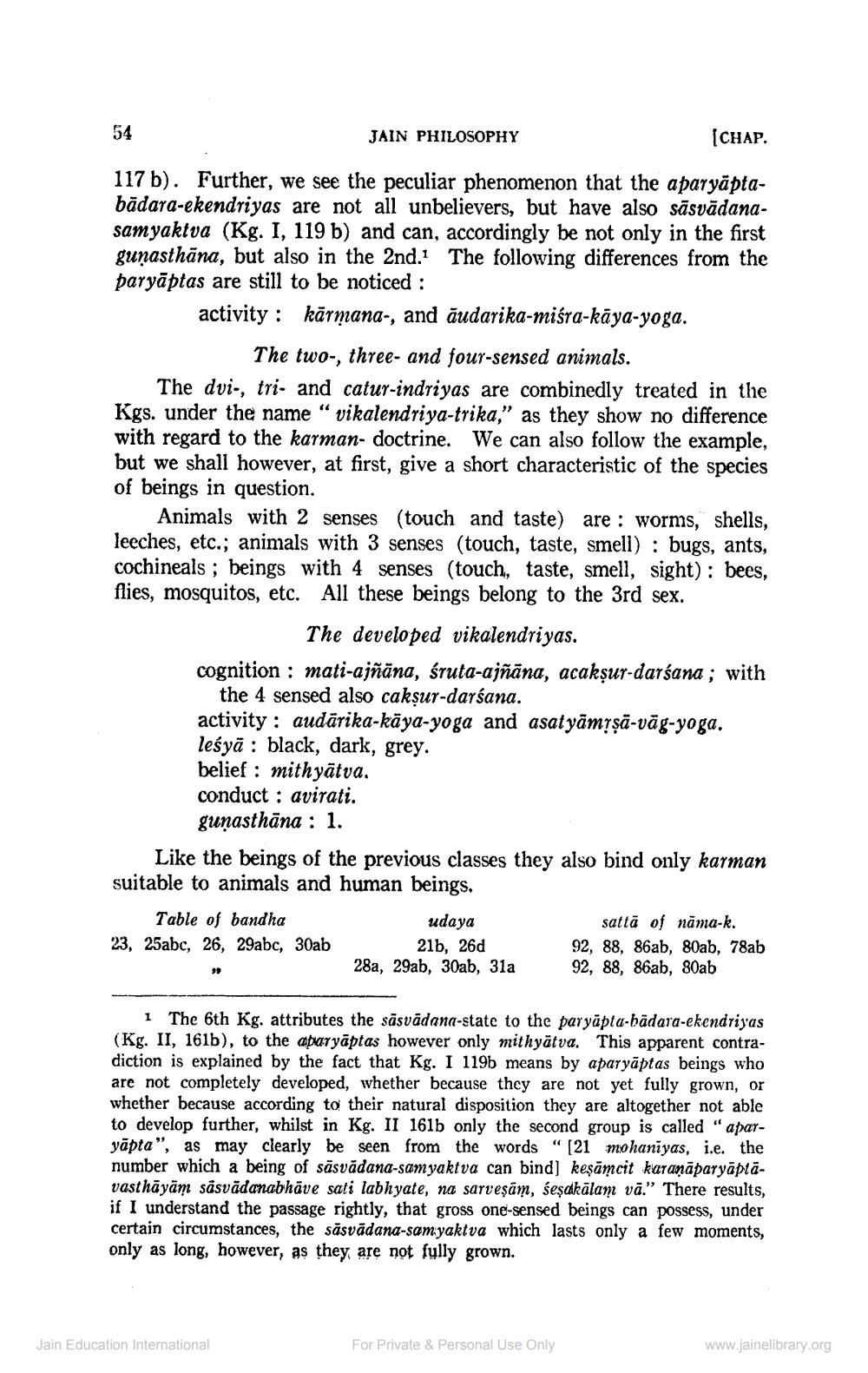________________
54
JAIN PHILOSOPHY
CHAP.
117 b). Further, we see the peculiar phenomenon that the aparyāptabādara-ekendriyas are not all unbelievers, but have also sāsvādanasamyaktva (Kg. I, 119 b) and can, accordingly be not only in the first gunasthana, but also in the 2nd. The following differences from the paryāptas are still to be noticed :
activity : kärmana-, and äudarika-miśra-kāya-yoga.
The two-, three- and four-sensed animals. The dvi-, tri- and catur-indriyas are combinedly treated in the Kgs. under the name " vikalendriya-trika," as they show no difference with regard to the karman- doctrine. We can also follow the example, but we shall however, at first, give a short characteristic of the species of beings in question,
Animals with 2 senses (touch and taste) are: worms, shells, leeches, etc.; animals with 3 senses (touch, taste, smell) : bugs, ants, cochineals ; beings with 4 senses (touch, taste, smell, sight): bees, flies, mosquitos, etc. All these beings belong to the 3rd sex.
The developed vikalendriyas. cognition : mati-ajñāna, śruta-ajñāna, acakşur-darśana ; with
the 4 sensed also cakşur-darśana. activity : audārika-käya-yoga and asatyāmışa-väg-yoga. leśyā : black, dark, grey. belief : mith yātva. conduct : avirati.
gunasthāna : 1. Like the beings of the previous classes they also bind only karman suitable to animals and human beings. Table of bandha
udaya
sattă of năma-k. 23, 25abc, 26, 29abc, 30ab
21b, 260
92, 88, 86ab, 80ab, 78ab 28a, 29ab, 30ab, 31a 92, 88, 86ab, 80ab
1 The 6th Kg. attributes the sāsvādana-state to the paryāpta-bädara-ekendriyas (Kg. II, 161b), to the aparyāptas however only mithyätva. This apparent contradiction is explained by the fact that Kg. I 119b means by aparyāptas beings who are not completely developed, whether because they are not yet fully grown, or whether because according to their natural disposition they are altogether not able to develop further, whilst in Kg. II 161b only the second group is called "aparyāpta", as may clearly be seen from the words “(21 mohaniyas, i.e. the number which a being of sāsvādana-samyaktva can bind) keşāmcit karañāparyāplāvasthāyām sāsvādanabhāve sati labhyate, na sarveşām, sesakālam vā.” There results, if I understand the passage rightly, that gross one-sensed beings can possess, under certain circumstances, the sāsvādana-samyaktva which lasts only a few moments, only as long, however, as they are not fully grown.
Jain Education International
For Private & Personal Use Only
www.jainelibrary.org




